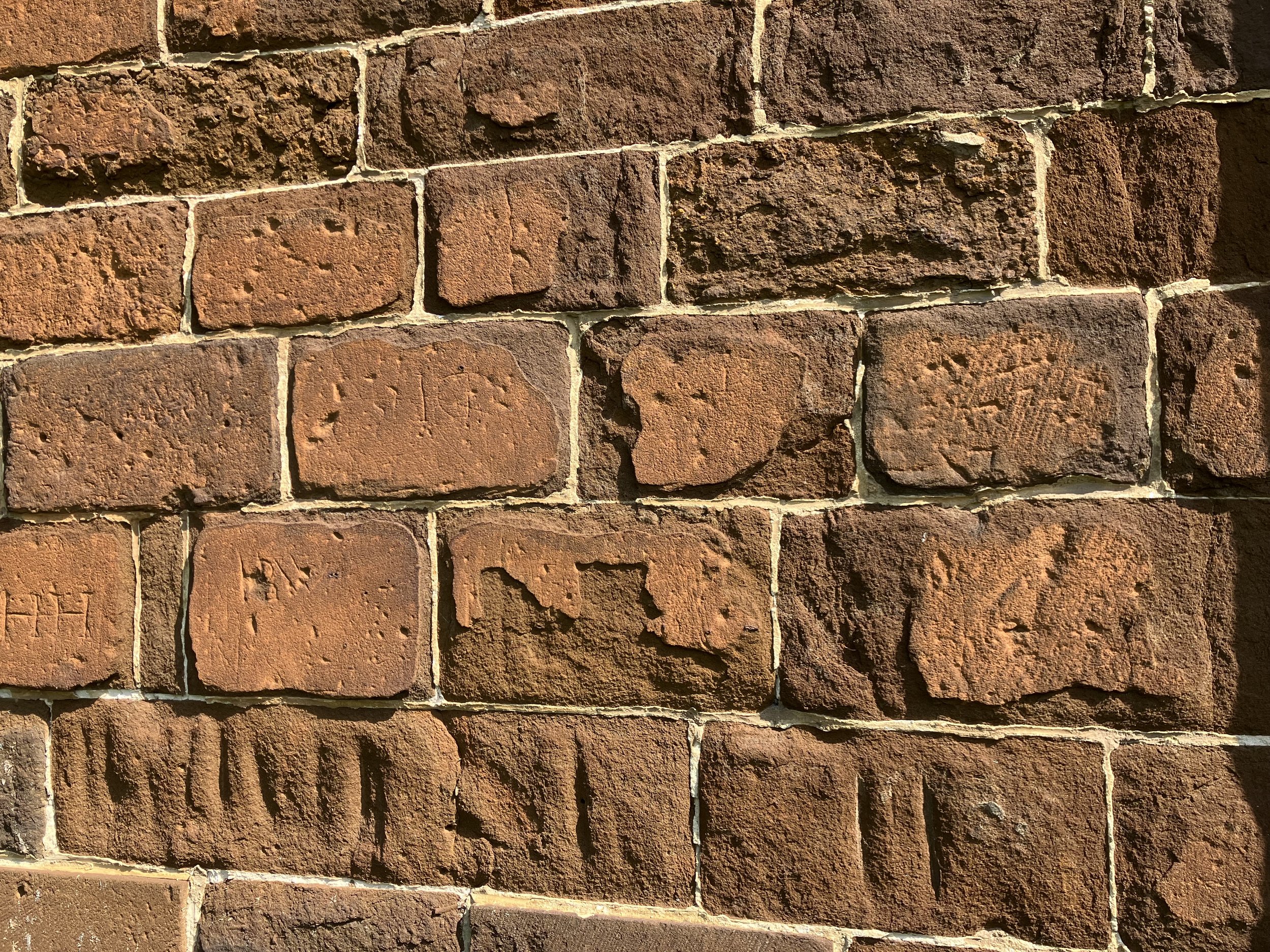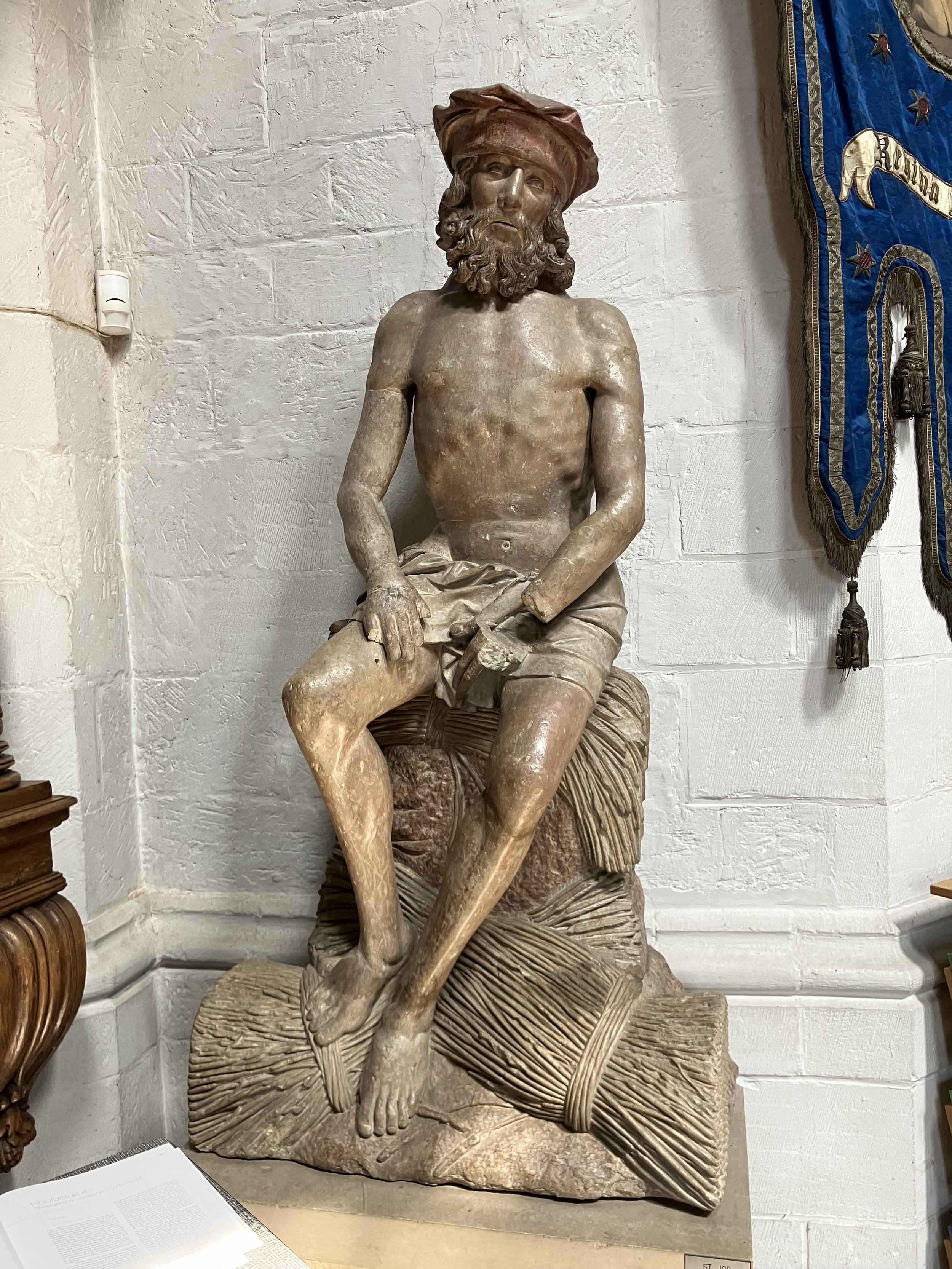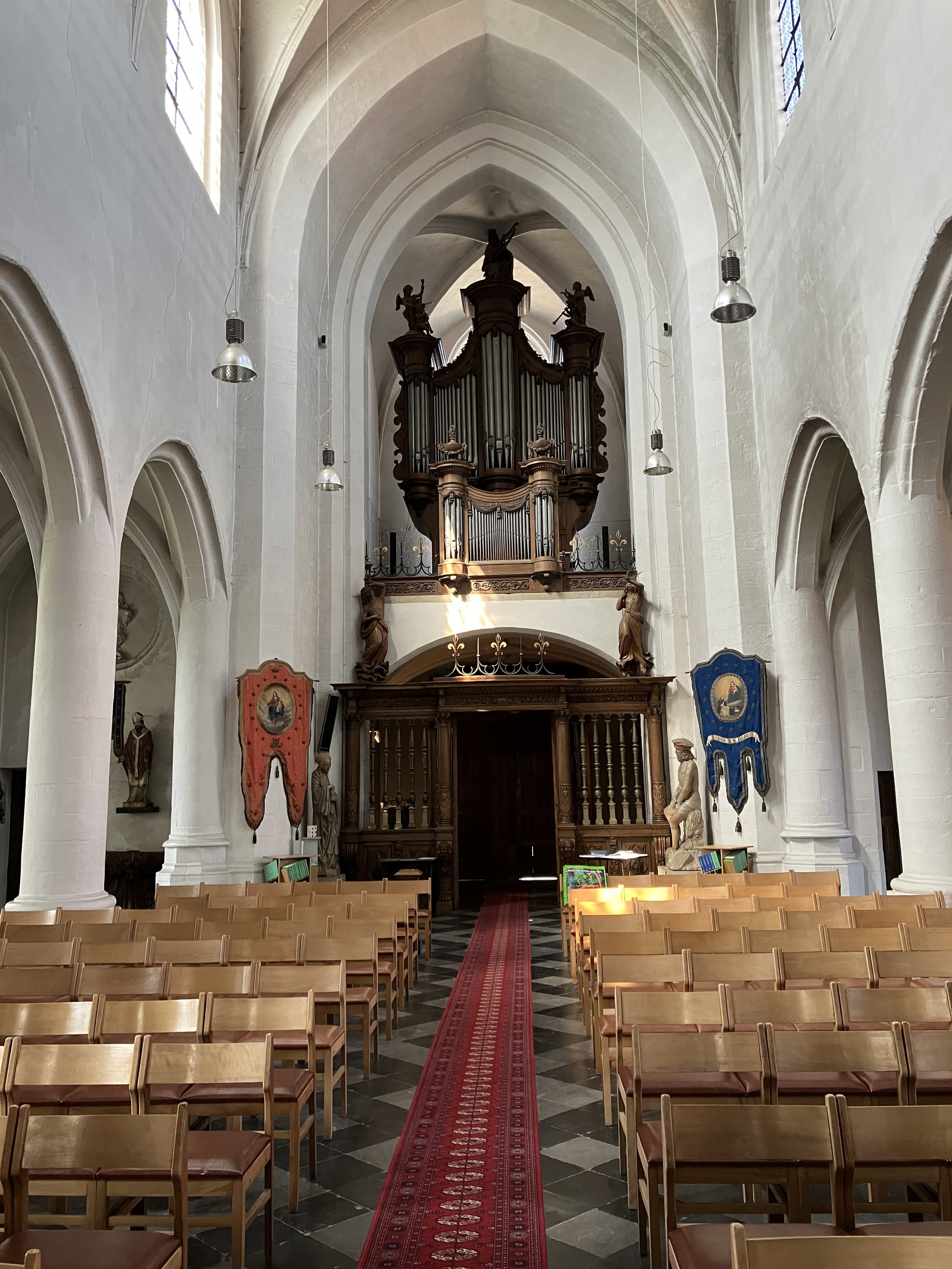Eating Sandstone, Eating a Story: What’s Dust got to do with it?
It is an odd thing to do, isn’t it? To dig out dust from a brick of a church and eat it? Even more curious is the practice surrounding this belief when considering that the bricks of the outer church were not themselves miraculous, but simply close to the miraculous wooden statue of Saint Job. For the practice of eating this dust to make sense, certain beliefs must be held: first, that matter is or can be sacred; second, that the sacredness imbued in matter (i.e., in the statue of Saint Job) can be transferred to other matter through proximity or touch; and third, the proximal sacredness of certain matter can be transferred (i.e., consumed by pilgrims, transported) without losing its sacredness.
Pilgrim marks (from various centuries) on the exterior iron sandstone bricks of Sint-Martinuskerk. Photograph: Hannah Gardiner.
The possibility of infused matter in medieval settings of religion and popular belief might sound odd, naive, or even suspicious to a secular person in the twenty-first century. However, the beliefs underlying this practice remain culturally relevant and in use today. Think, for example, of a baseball that’s been struck out of the park in a professional game. There is no doubt when fans flail to catch this ball and erupt in excitement when it has been caught that matter can still be thought of as sacred. Not only has some part of the essence of the batter been conferred from the bat to the ball in the player’s hitting of the ball, the occasion of a home run acts as a sort of simultaneous ‘sanctification’ of the player and the baseball they hit. For the person who has caught the baseball, this object becomes treasured due to its participation in a personal story and a collective one. The individual’s act of catching has brought them closer to the event in a meaningful, almost religious way. This closeness and the newfound sacredness of the baseball do not dissipate when they leave the ballpark.
This analogy is not a perfect comparison of the intricacies of each scenario, but nonetheless invites us to look more closely and creatively at rituals of the past. It also illustrates how modern people continue to perceive and mediate objects through story. Unlike the iron sandstone bricks at Sint-Martinuskerk in Wezemaal, which were “touched” by the statue of Saint Job through their proximity to it, the baseball is “touched” by proxy by the baseball bat, which the player touches directly.[1] This baseball analogy nonetheless offers us an opportunity to meditate on an object considered that is sacred without having been physically touched by the person who made it sacred. This is likewise true of the bricks at Sint-Martinuskerk.
For both pilgrim and the baseball fan who catches a home run ball, their participation in this collective history does not depend on them. Both are invited into a communal story, and therefore an understanding of these objects as ‘sacred,’ because of someone else’s actions, which have made them so — either the player’s or the saint’s/the team’s or Christ’s.
So while eating dust from church bricks does indeed sound like an odd thing to do, so does willingly catching a cushioned cork covered in horse or cowhide from the sky, doesn’t it? It’s only when you if consider the stories in which they take part that neither one seems quite as ridiculous.
Written by Hannah Gardiner.
[1] Note: We still acknowledge the power of direct touch when we display clothing worn by celebrities in museums, preventing the public from the now destructive power of their own touch.
_________
views inside of Sint-Martinuskerk
View from the back of the church, facing the high altar. Photograph: Hannah Gardiner.
Statue of Saint Job. Anonymous, c. 1491–1610, stone, 177 x 87 x 43 cm. Wezemaal, Sint-Martinuskerk. Photograph: Hannah Gardiner.
View of the church organ from mid-church. Photograph: Hannah Gardiner.
Statue of Saint Mary of Magdalene. Anonymous, c. 1501-1525, stone, 169 cm (h). Wezemaal, Sint-Martinuskerk. Photograph: Hannah Gardiner.
View of ceiling with northern keystone with the coat of arms of the Lords of Wezemaal (top) and southern keystone depicting Our Lady and Child on a crescent moon (bottom). Anonymous, 1401-1500. Wezemaal, Sint-Martinuskerk. Photograph: Hannah Gardiner.






